THE HAIRY GIRAFFE… IN NAMIBIA
How long? We went to Namibia for 3 weeks.
When? In August, it’s winter, and the temperatures are more pleasant: the days are comfortable, the nights are cool, the sky is clear, and the chance of rain is very low.
Ease of independent travel: 4 giraffes ![]() Having a car is essential for getting around Namibia, especially if you plan to tour the country. Since a significant portion of the road network isn’t paved, it’s better to rent a 4×4 (with an extra spare wheel) and know how to change a tire. Be cautious on the roads: wild animals are widespread and can cross the road at any time, even in urban areas.
Having a car is essential for getting around Namibia, especially if you plan to tour the country. Since a significant portion of the road network isn’t paved, it’s better to rent a 4×4 (with an extra spare wheel) and know how to change a tire. Be cautious on the roads: wild animals are widespread and can cross the road at any time, even in urban areas.
Costs: 4 giraffes ![]() Accommodation, food, and activities can be quite expensive, especially if you stay in lodges. It’s possible to cut down costs by renting a 4×4 with a rooftop tent, but be aware that nights can be chilly.
Accommodation, food, and activities can be quite expensive, especially if you stay in lodges. It’s possible to cut down costs by renting a 4×4 with a rooftop tent, but be aware that nights can be chilly.
Ease of communication: 4 giraffes ![]() You won’t have any problem being understood in English (and in German).
You won’t have any problem being understood in English (and in German).
Security: 4 giraffes ![]() Overall, the situation is calm, and on a typical tourist route, the risks are low. It’s advisable to exercise a bit more caution in larger cities, especially in Windhoek.
Overall, the situation is calm, and on a typical tourist route, the risks are low. It’s advisable to exercise a bit more caution in larger cities, especially in Windhoek.
Health: 4 giraffes ![]() The risk of malaria is very low, almost nil during the dry season, except in the Caprivi Strip where it’s advisable to take preventive malaria treatment. The water is drinkable in major cities.
The risk of malaria is very low, almost nil during the dry season, except in the Caprivi Strip where it’s advisable to take preventive malaria treatment. The water is drinkable in major cities.
Gay friendly: 1 giraffe ![]() It’s better to remain discreet. We opted to leave our wedding bands at home…
It’s better to remain discreet. We opted to leave our wedding bands at home…
Travel ease: 5 giraffes ![]() Traveling through Namibia is easy. You’ll experience a true sense of freedom as you navigate the country’s roads, admiring the stunning landscapes and local wildlife. However, remember to carry water and snacks before hitting the road, as dining spots can be quite far apart. A good playlist can also brighten up your journey!
Traveling through Namibia is easy. You’ll experience a true sense of freedom as you navigate the country’s roads, admiring the stunning landscapes and local wildlife. However, remember to carry water and snacks before hitting the road, as dining spots can be quite far apart. A good playlist can also brighten up your journey!
Highlights: ![]() The diverse, grandiose landscapes, perfect for a road trip, the omnipresent local wildlife, the feeling of being alone in the world while traversing the roads.
The diverse, grandiose landscapes, perfect for a road trip, the omnipresent local wildlife, the feeling of being alone in the world while traversing the roads.
Letdowns: ![]() The accommodations in Etosha National Park lack the magical charm found in those offered in Tanzania, and the Independence Museum in Windhoek, which holds little interest.
The accommodations in Etosha National Park lack the magical charm found in those offered in Tanzania, and the Independence Museum in Windhoek, which holds little interest.

A 5000 km loop took us all over the country, except for the Caprivi Strip. The itinerary included cities, deserts, savannahs, and the ocean.
Check out our individual impression articles on Namibia:
Three-Week Itinerary in Namibia
Here is the detailed itinerary of our three weeks in Namibia:
Week 1: From Windhoek to Sossusvlei
Day 0: Flight from Paris to Windhoek with a long layover in Johannesburg.
Day 1: After a night’s rest in Windhoek, we pick up our car and head out on the roads of Namibia, heading south. We cross the Tropic of Capricorn.


First mishap: a tire blows less than 3 hours after departure! Luckily, we had set off with two spare tires!
We reach the Kalahari Desert where we spend the night at Bagatelle Kalahari Game Lodge, which rehabilitates cheetahs. We witness their evening meal and even have the chance to pet one. A unique and memorable experience. We spend the evening admiring the stars, including the Milky Way, which we see for the very first time.


Day 2: The day starts with an excursion with Bushmen who explain their traditional way of life.



We then hit the road towards the Quiver Tree Forest (where the Bushmen use these trees to carry their arrows) and the Giant’s Playground (a geological park featuring immense stacks of basalt blocks resembling a giant child’s construction set). We spend the night in Keetmanshoop.



Day 3: We drive to the Fish River Canyon, the largest canyon in Africa. The view is incredible, and the wildlife is abundant there.



Day 4: Heading towards Lüderitz. The proximity to the ocean brings us clouds, cold weather, and even a bit of rain. Nevertheless, we manage to visit this charming little town without getting wet.



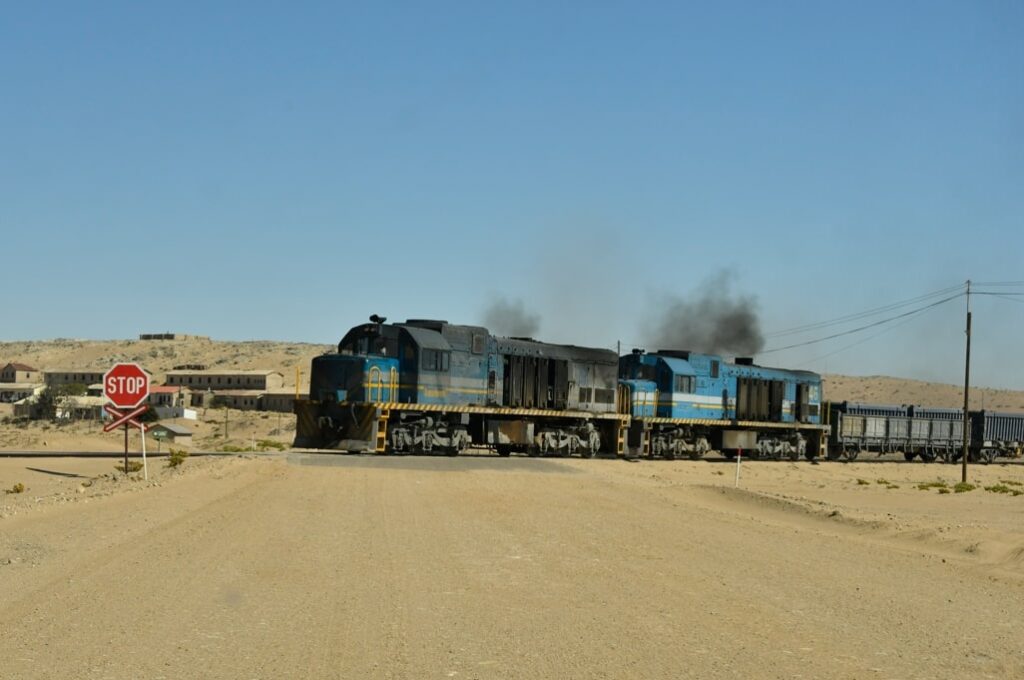

Day 5: Visit to Kolmanskop, a once-prosperous ghost town due to diamond mining.

The abandoned houses, engulfed by sand, give the impression of having leaped back in time.



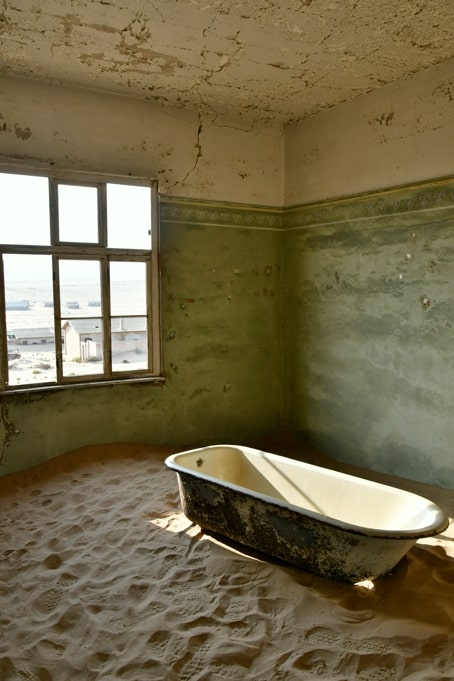
We then drive on Route 707, renowned as the most beautiful road in Namibia. Alone in the world, we share part of the journey with ostriches.

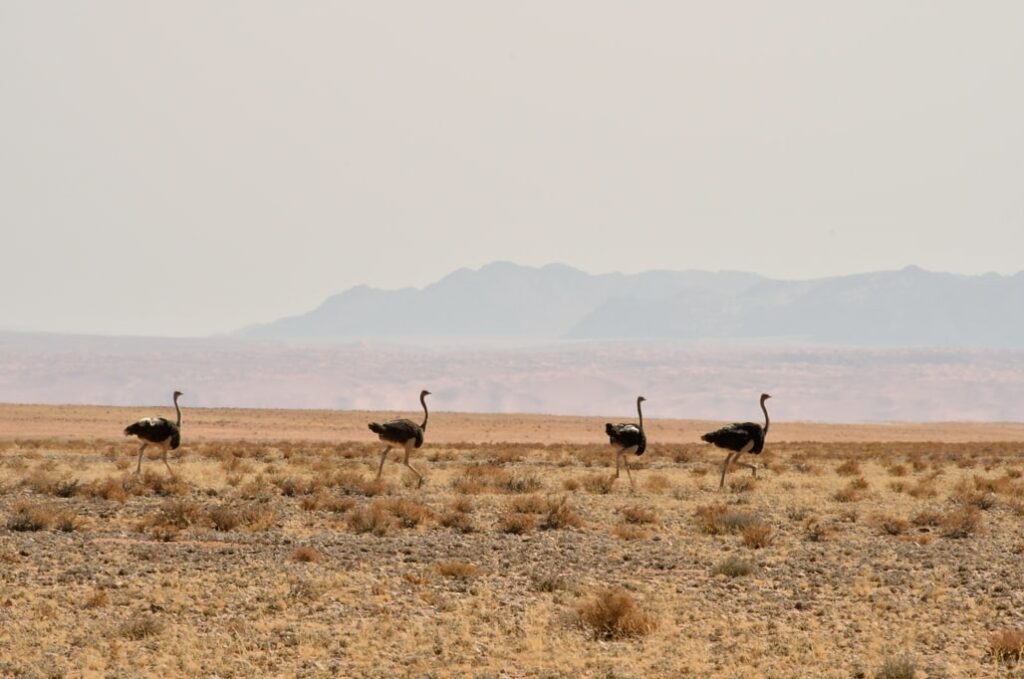



We end the day at Duwisib, with a farmer with whom we share dinner.
Week 2: From Sossusvlei to Etosha
Day 6: We drive to the Namib-Naukluft National Park. Along the way, stunning landscapes accompany us.



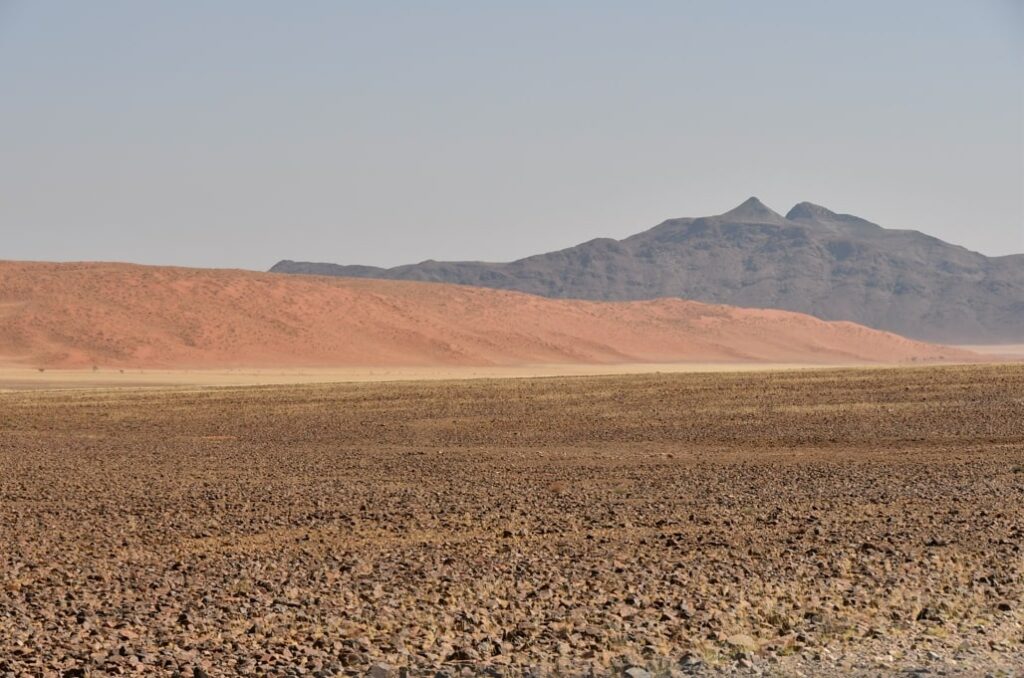
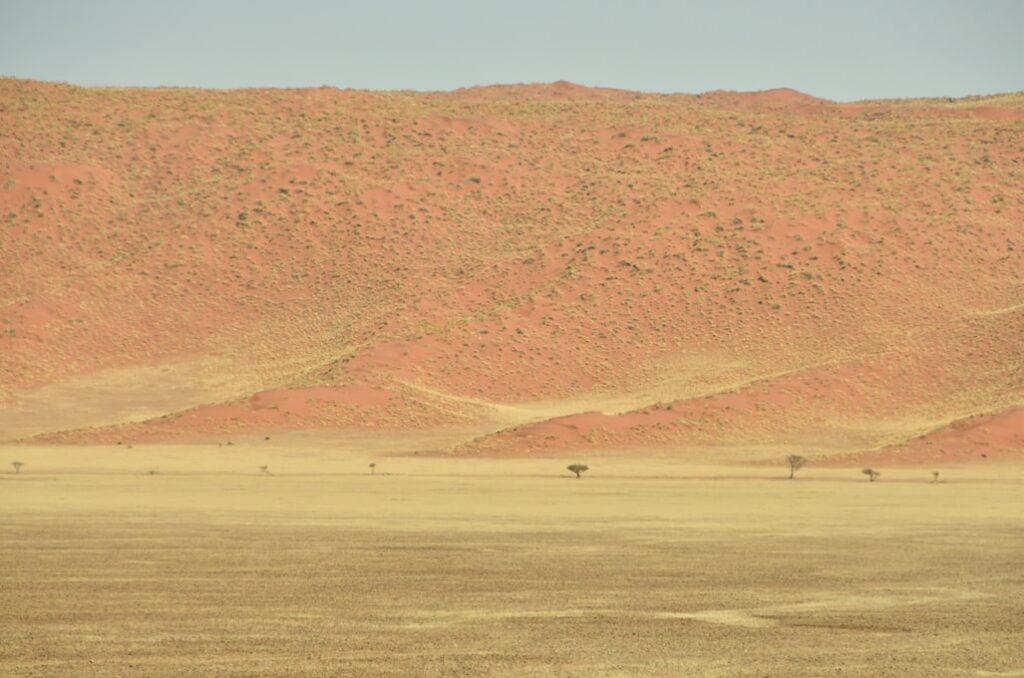
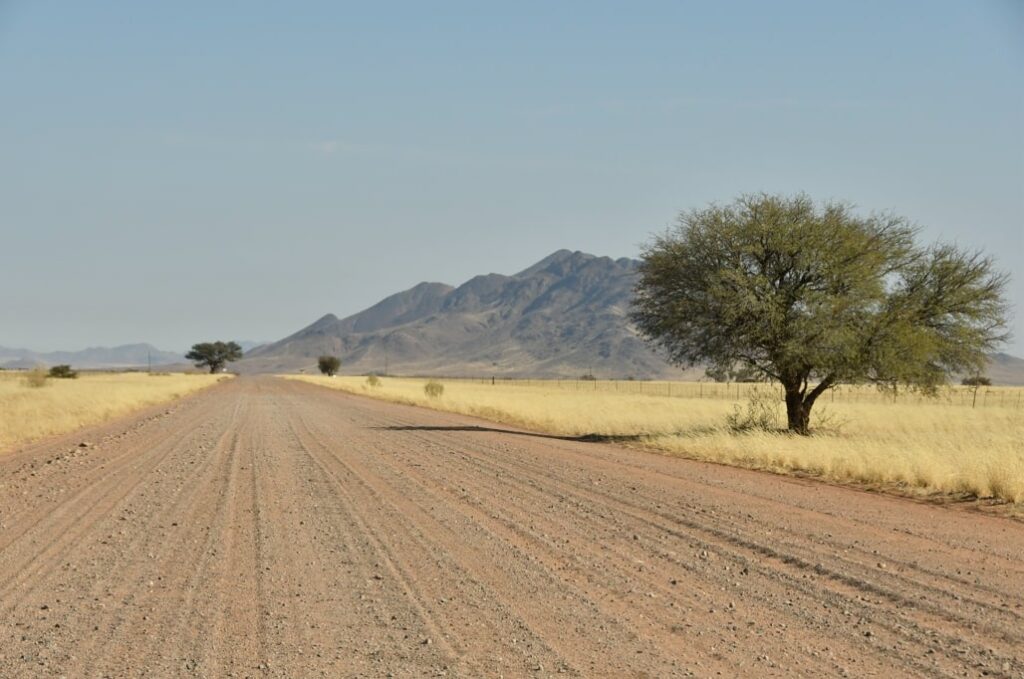
After dropping off our bags at the Sossus Dune Lodge, we set off for a walk in the Hidden Vlei.
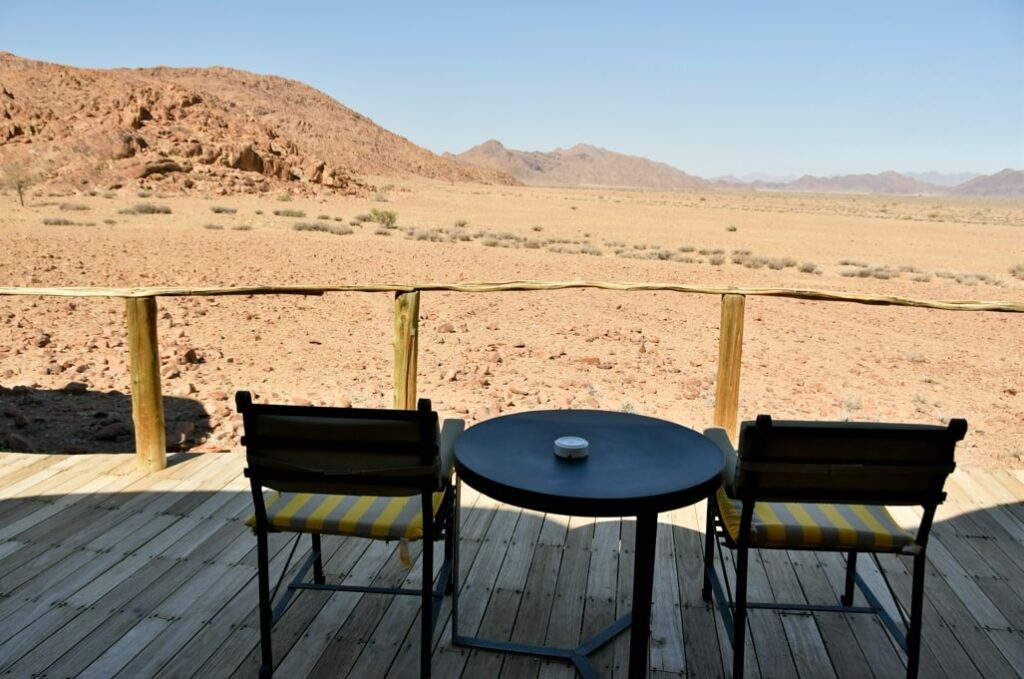
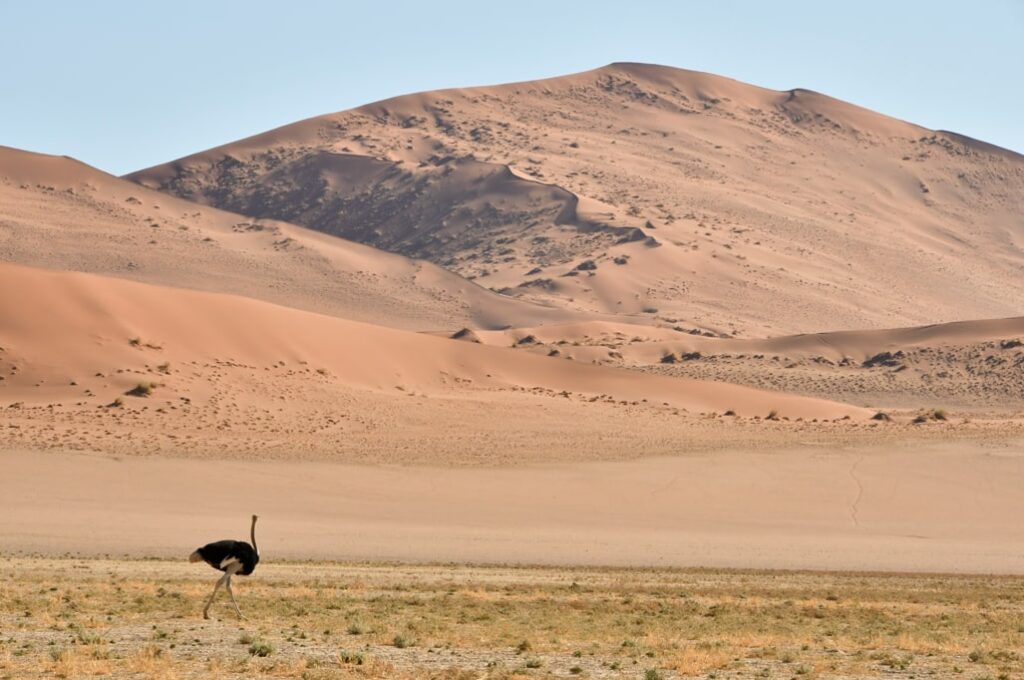



The Hidden Vlei will remain a massive favorite. We were alone, enjoying this magnificent site, as if outside of time.





Day 7: A sandstorm prevents us from visiting Dead Vlei early in the morning: we woke up very early for nothing! Luckily, the wind calms down by midday, allowing us to explore Sossusvlei, as well as Dead Vlei with its desert landscape of dead trees burned by the sun.




Day 8: After a stop in Solitaire to refuel at a gas station straight out of Route 66, we arrive at the Rostock Ritz Desert Lodge, in the middle of nowhere.



We spend the afternoon hiking among the rocks in the lodge’s 12,000 hectares before ending up in the pool, hoping the domesticated zebras will come by to say hello. For dinner, we sample the local meat: oryx steak or smoked, zebra salami, and springbok carpaccio.



Day 9: We drive to Walvis Bay to capture some photos of its flamingos, then continue on to Swakopmund.
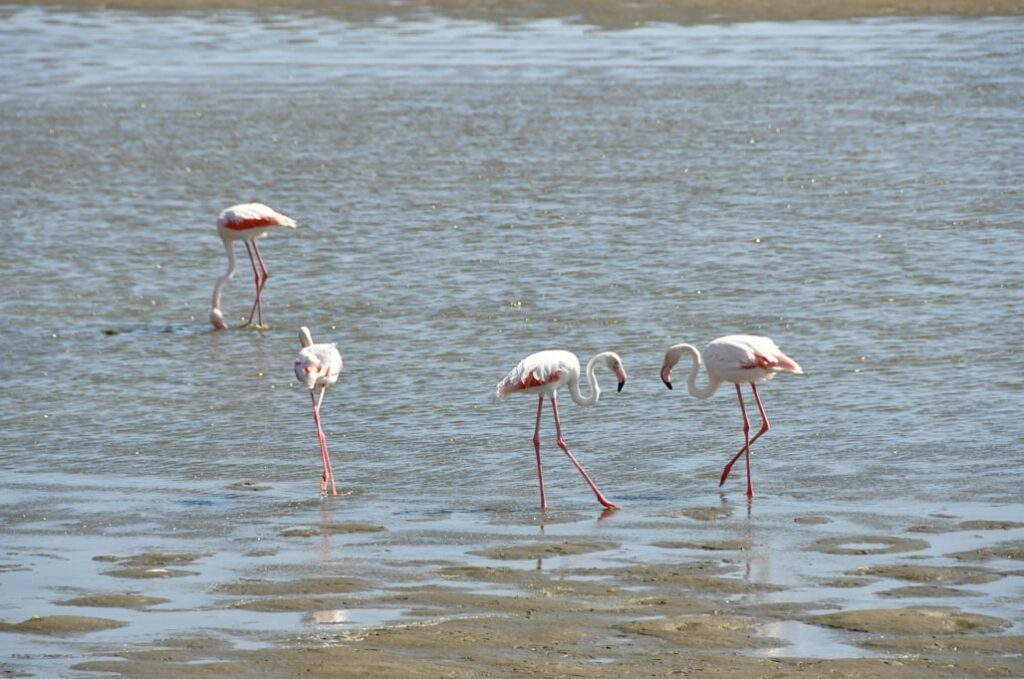

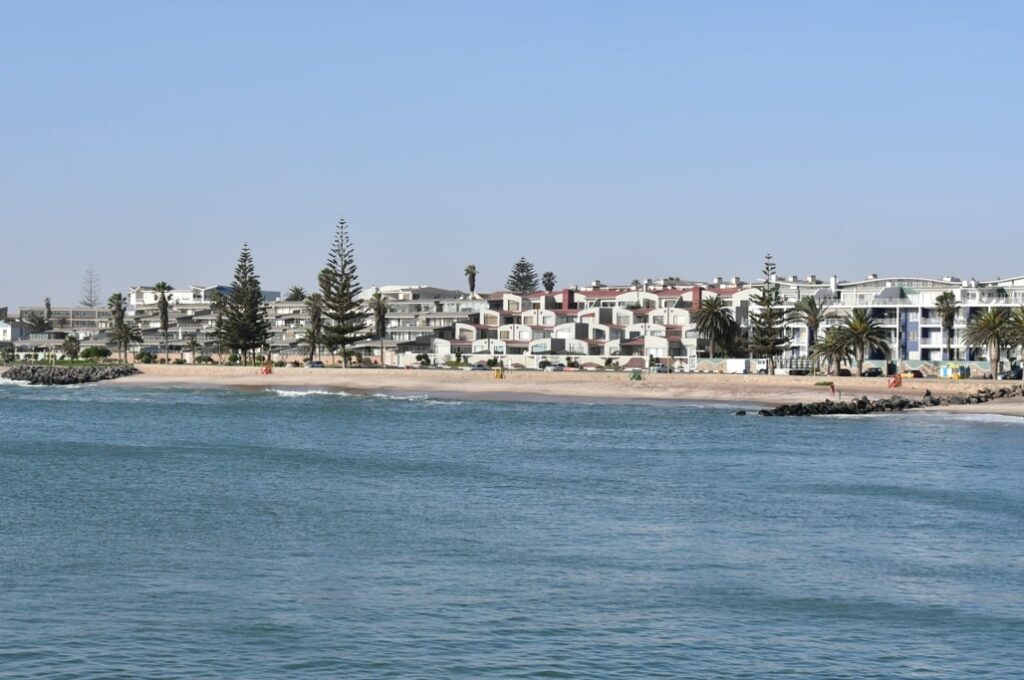


Day 10: We spend the morning in the Namib Desert searching, with a guide, for the small reptiles that inhabit it (geckos, lizards, skinks, vipers…).






We spend the afternoon exploring Swakopmund, strolling among the colorful colonial houses and encountering the local wildlife, even within the city.

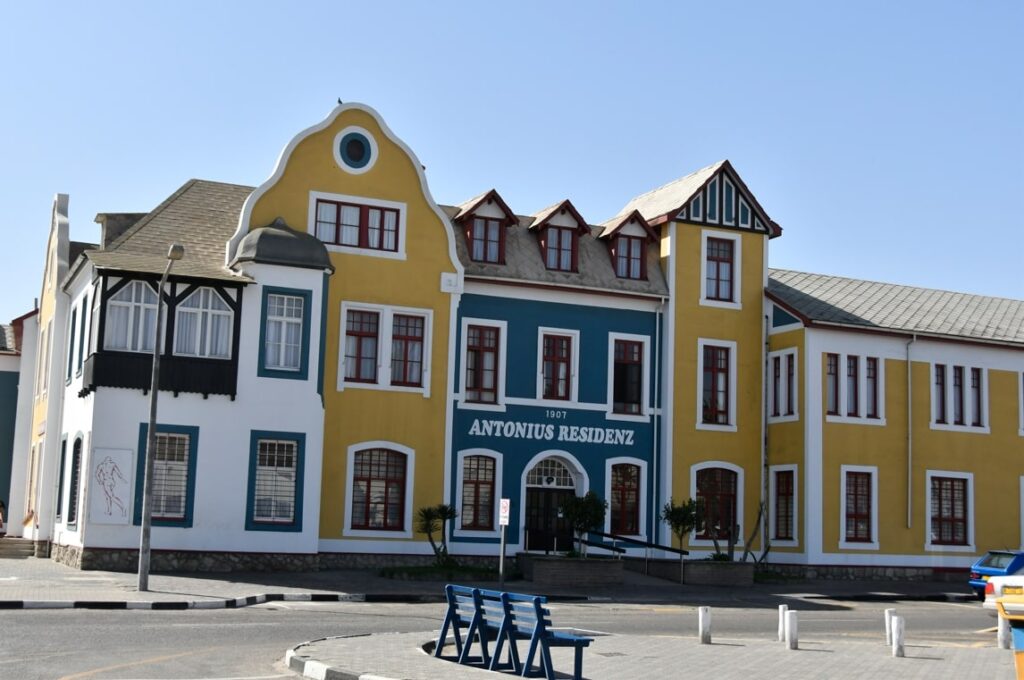

Day 11: We drive along the Skeleton Coast and stop to take a photo of the wreck of the Zeila (a fishing boat).
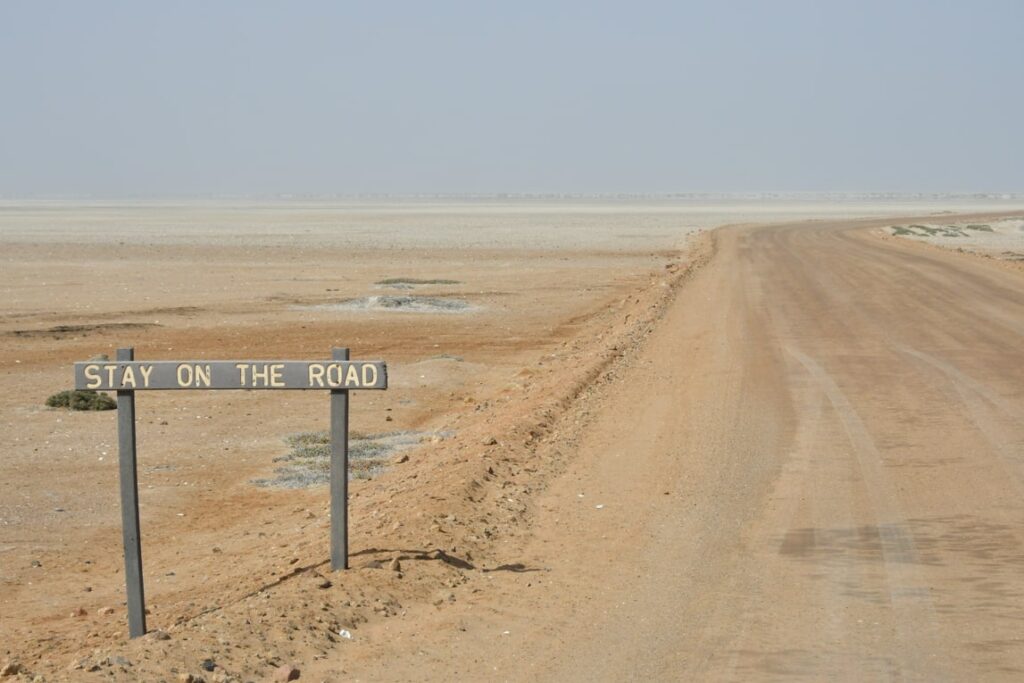

We then head towards Cape Cross and its colony of over 100,000 fur seals. A magnificent spectacle filled with sounds and scents!





After spending over an hour in their company, we continue our journey to Brandberg White Lady Lodge, making a few stops along the way to buy semi-precious stones displayed for sale on roadside stalls.


Day 12: After breakfast spent with the owner’s pet meerkat, eagerly watching for any egg crumbs that might fall to the ground, we visit the White Lady Rock Painting, where the rock art is over 2000 years old.



We then drive to Madisa Camp, where we spend the afternoon, making a stop on the way at a village-shop of Himba and Herero, two local ethnic groups, to buy some local crafts.


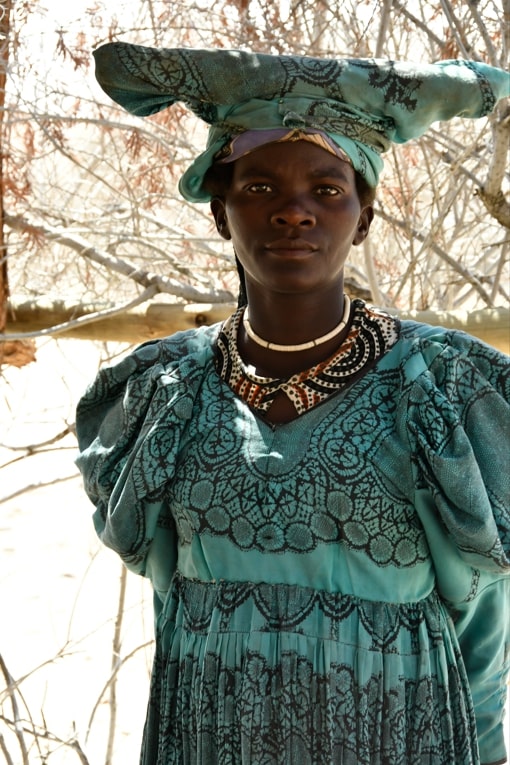
We have dinner around a braai (a barbecue).



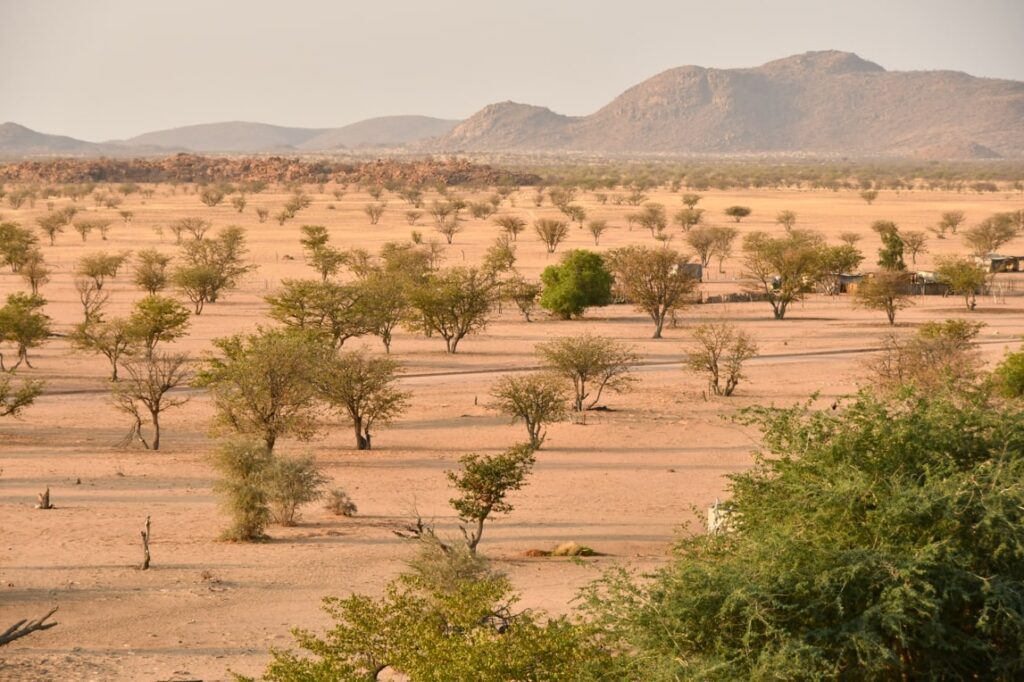
Day 13: We drive to the Twyfelfontein site, a UNESCO World Heritage site known for its thousands of petroglyphs.


We then stop at the Petrified Forest, where physical and biochemical phenomena have transformed tree trunks into rocks. Here, we observe welwitschia plants capable of surviving up to 2000 years. We spend the rest of the day at Vingerklip Lodge: swimming, hiking, and observing animals from the balcony of our room.



Week 3: From Etosha to Windhoek
Day 14: First day of safari at Etosha National Park (see our tips for organizing your safari in Namibia). Oryx, ostriches, small birds, wildebeests, giraffes, jackals, and antelopes are observable. We’ll spend the first two nights at Okaukuejo camp, where a family of rhinoceroses comes to drink, at nightfall, at the waterhole very close to the camp.






Day 15: Second day of safari at Etosha National Park. This time, we’ll see zebras, lions, impalas, greater kudus, mongooses, hyenas, secretary birds, not to mention the ubiquitous giraffes and our family of rhinoceroses.



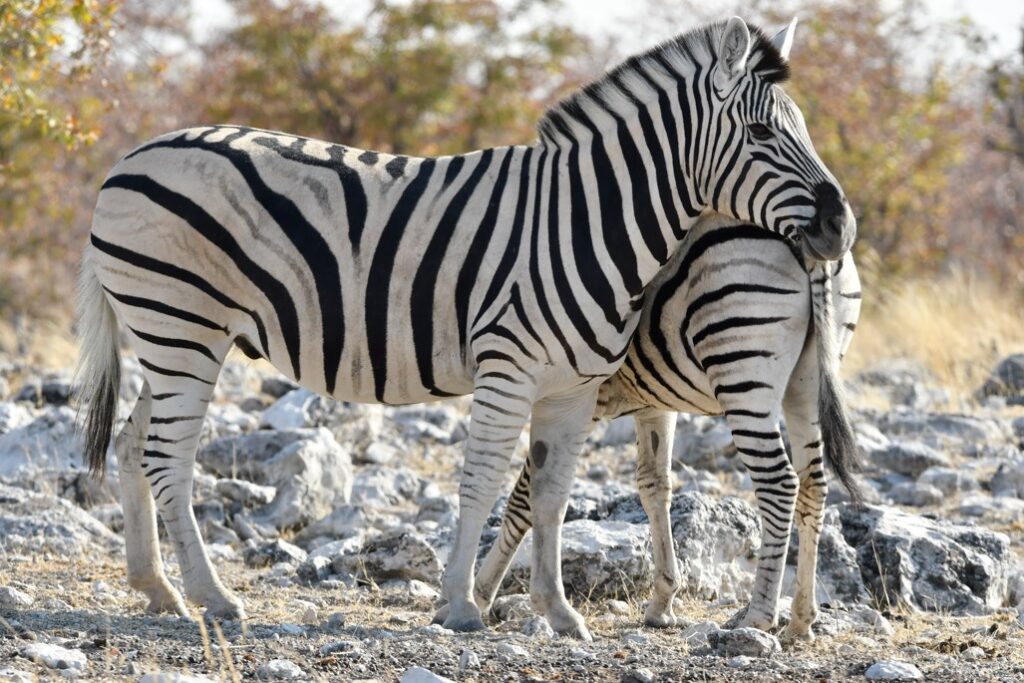
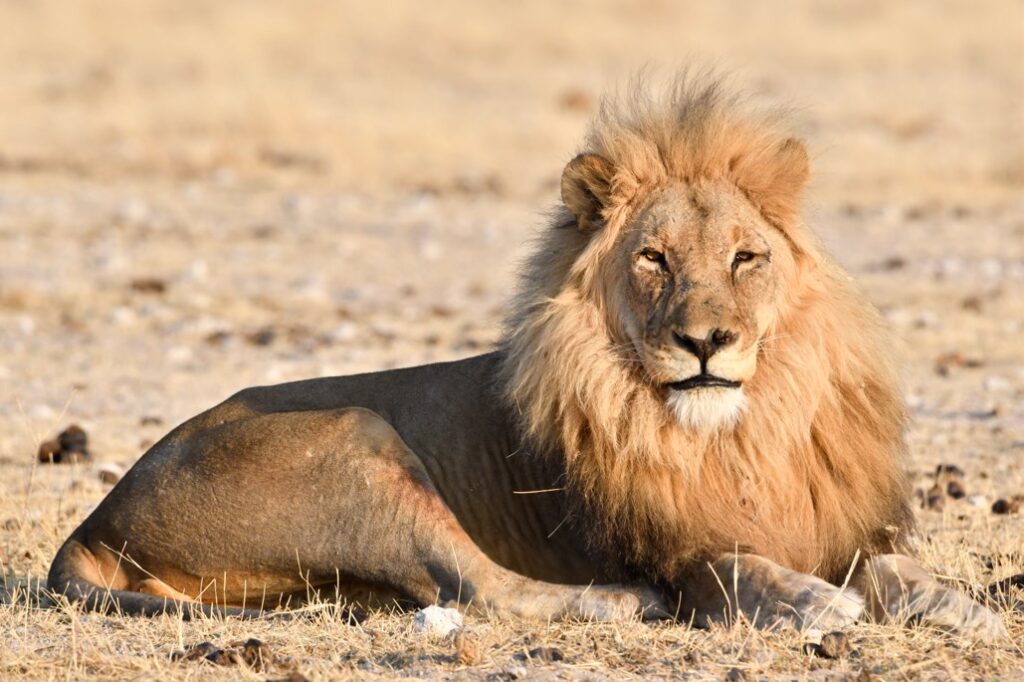

Day 16: Third day of safari at Etosha National Park. Today’s agenda: witnessing a herd of elephants taking a mud bath, encountering a herd of zebras blocking our path, not to mention antelopes, colorful birds, wildebeests, etc. We’ll spend the next two nights at Halali camp.


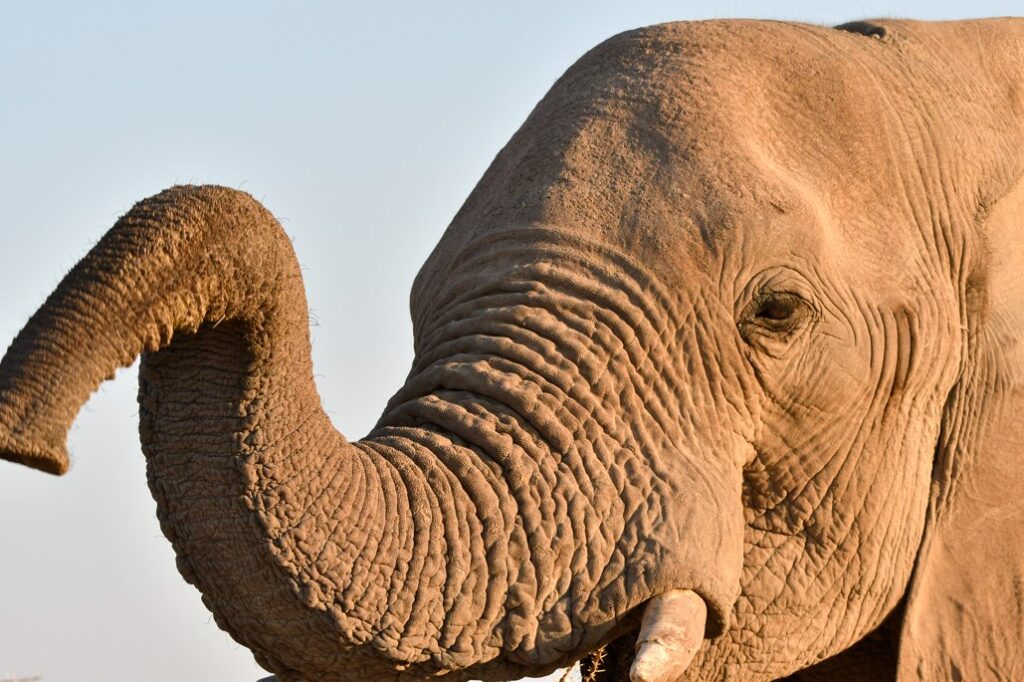



Day 17: Fourth day of safari at Etosha National Park. Benjamin is suffering from food poisoning and stays at the lodge in the morning. He misses witnessing a herd of elephants having a bath. Find all our tips for successful safari photography.





Benjamin joins the safari in the afternoon just in time to see a female rhinoceros and her calf just a few meters from the road.

Day 18: Fifth day of safari at Etosha National Park, starting with a couple of cheetahs basking in the sun.


Followed by elephants, zebras, hyenas, giraffes, and dik-diks. We’ll spend the last night at Namutoni camp.
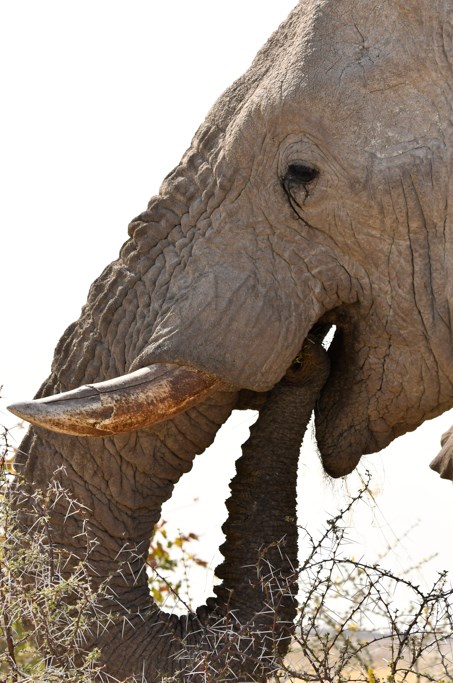







Day 19: It’s François’s turn to fall victim to food poisoning. Courageous but weakened, he manages to take the wheel to leave Etosha. Several rest stops are necessary to reach the Waterberg Wilderness Lodge, where we’ll spend the night.




Day 20: Morning hike in the forest amidst baboons and lovebirds before hitting the road towards Okahandja.



We stop about 80 kilometers before that, at the Ovita Wildlife Restcamp, where crocodiles and hippos roam freely on the property. While the crocodiles remained rather discreet, the hippos were certainly present.


Day 21: Back to Windhoek, where we start by visiting the Independence Museum before heading out to shop for crafts and souvenirs. We’ll spend our final evening at the hotel.



Day 22: Return to Paris after a layover in Johannesburg.
Find all our other articles on Namibia:




